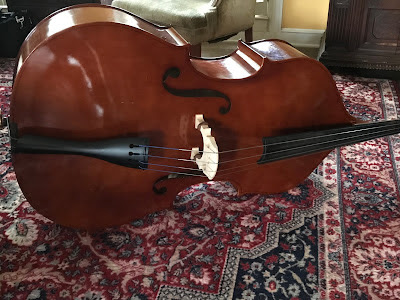Walking Bass
When I need ballast and rhythm, when I require that steady beat, there is usually one composer I turn to — J.S. Bach. I cue up the Brandenburg Concerto No. 2 because it has the peppy piccolo trumpet I once heard can pop the blood vessels of its players, so high are its notes, so forcefully must one blow to make them sound.
But also because, like its confreres, No. 2 has a steady walking bass line, the solid quarter notes perfect for pacing one’s self, for staying in line, for moving along.
Although now associated with rock or jazz, the walking bass line has long-ago origins. Some theorists consider Bach its early master. And while this is important for musicians to know, it’s equally essential for walkers. We need a beat that will pulse all the way down into our metatarsal bones.
Although the trumpet notes of Bach’s Brandenburg No. 2 dance around on high, underneath them is the dependable meter of the walking bass. It’s a winning combination: the flourishes of the former, the steadiness of the latter. Together, they keep me going.
(Can’t imagine walking very far with this bass!)
